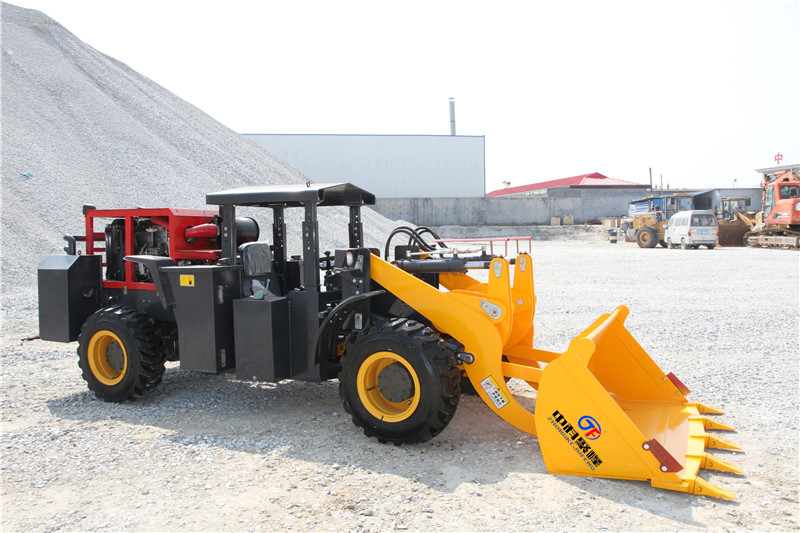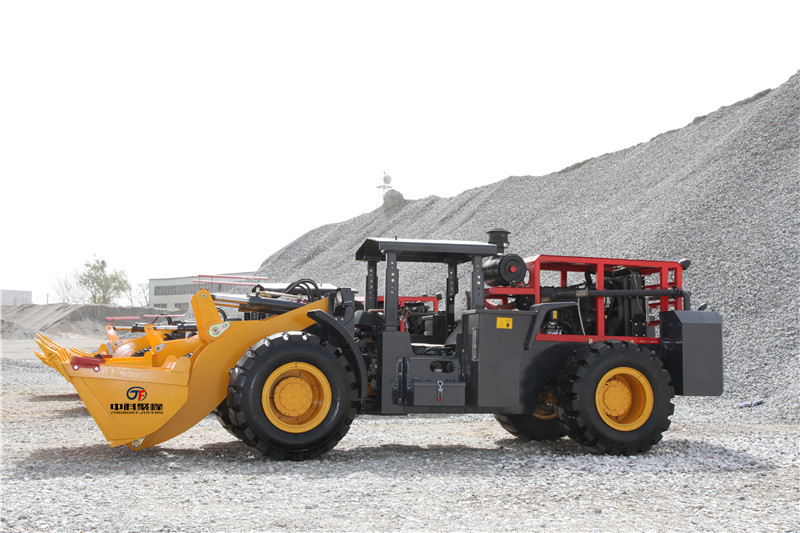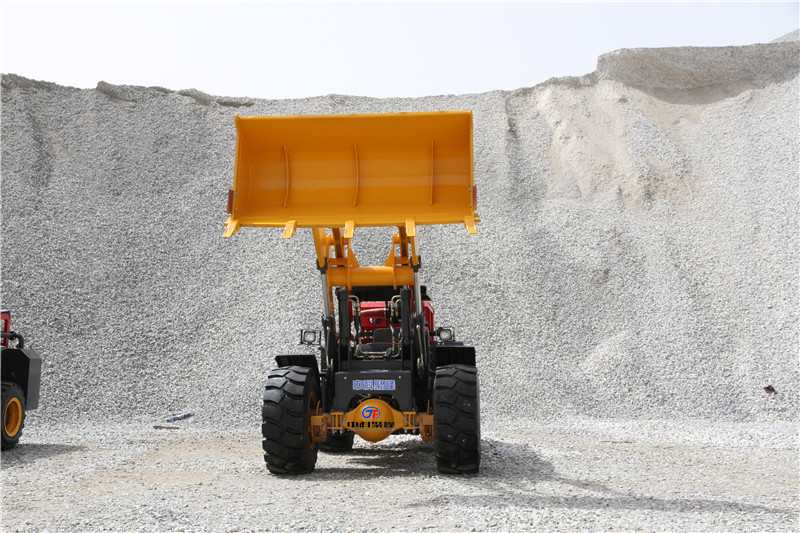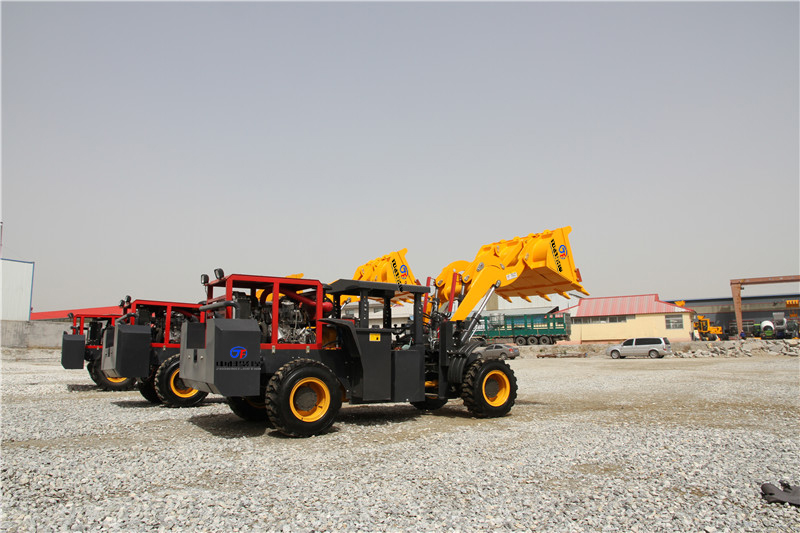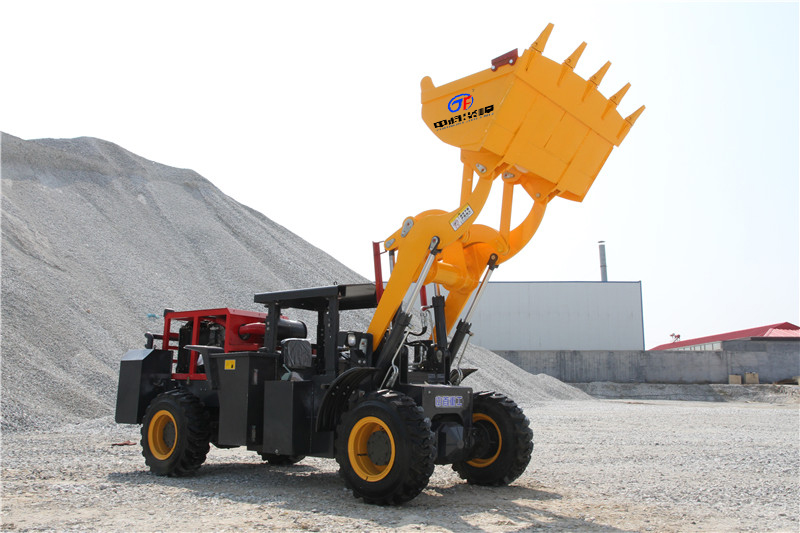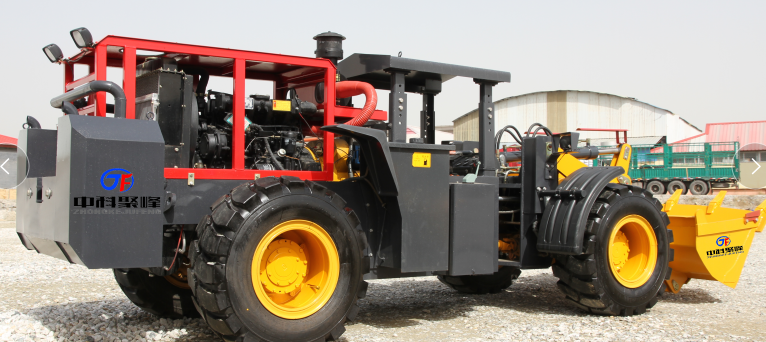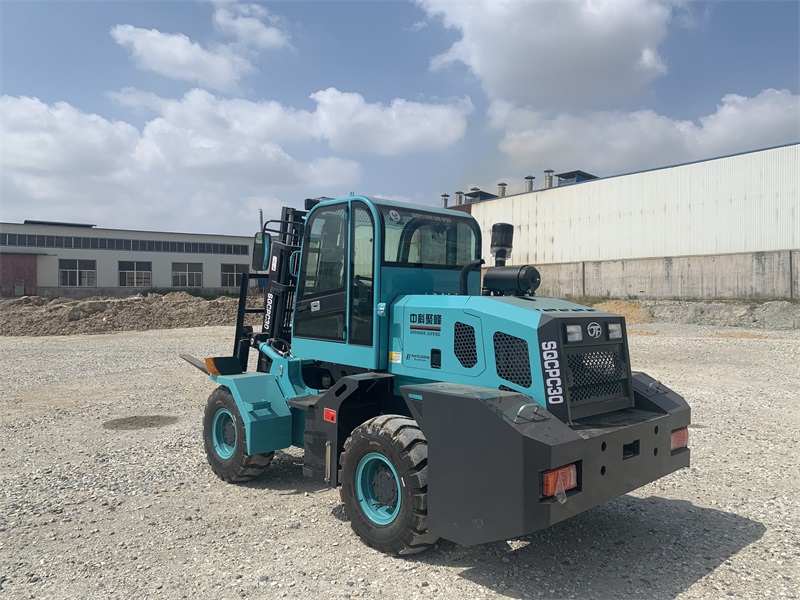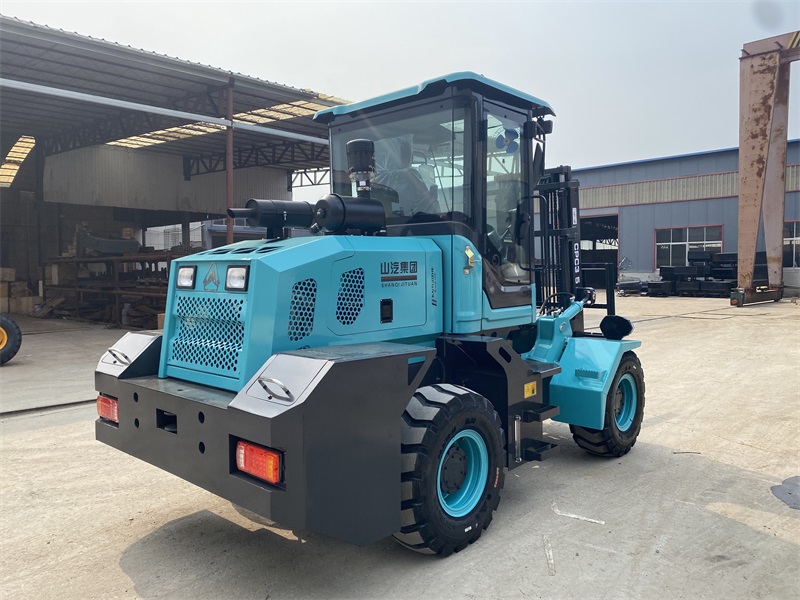Loader and forklift are self-propelled earth moving machinery which is hinged on the front of the chassis and is composed of boom, linkage and loading bucket to shovel, transport, unload and level operation during traveling. If the corresponding working device is installed, it can also push soil, lift, load and unload wood, etc. it is a widely used construction machinery.
裝載機(jī)自重大,軸距短,且始終處于流動(dòng)作業(yè)狀態(tài),難以用固定位置的衡器對(duì)它所載貨物進(jìn)行稱(chēng)量,否則會(huì)影響工作效率,因此,尋找一種使其在工作過(guò)程中完成對(duì)貨物稱(chēng)重的方法,才能較好地這一問(wèn)題。一般來(lái)對(duì)貨物計(jì)量的準(zhǔn)確度要求越高越好,稱(chēng)重誤差一般要求0.1~0.5左右。 裝載機(jī)進(jìn)行散堆貨物裝載時(shí),初期采用測(cè)比重畫(huà)線(xiàn)估算的方法來(lái)計(jì)算所裝貨物的重量,此法存在著誤差大、隨機(jī)性大、不便管理等特點(diǎn)。多裝,會(huì)造成直接經(jīng)濟(jì)損失和超載運(yùn)輸;少裝欠載,則會(huì)降低運(yùn)輸效能,損害客戶(hù)利益。同時(shí),因裝載機(jī)無(wú)稱(chēng)量裝置而使物料裝卸還需要依賴(lài)于汽車(chē)轉(zhuǎn)運(yùn)過(guò)秤或使用地磅,裝卸效率低下費(fèi)用也很高。隨著鐵路、汽車(chē)、港口、碼頭等物流裝卸業(yè)的發(fā)展,裝載上貨效率和準(zhǔn)確性的要求越來(lái)越高。需要一種的裝載機(jī)稱(chēng)重系統(tǒng)來(lái)實(shí)現(xiàn)裝載過(guò)程中對(duì)貨物的自動(dòng)準(zhǔn)確計(jì)量,對(duì)于加強(qiáng)裝載作業(yè)管理,防止超載和欠載,提高裝卸作業(yè)效率和效益,保證車(chē)輛運(yùn)輸?shù)男杂兄@著的實(shí)效。
Since the loader is heavy, the wheelbase is short, and it is always in the flow operation state, it is difficult to weigh the goods carried by it with a weighing instrument in a fixed position, otherwise it will affect the work efficiency. Therefore, to find a method to complete the weighing of goods in the working process can better solve this problem. Generally, the higher the accuracy of cargo measurement, the better. The weighing error is generally about 0.1 ~ 0.5. When the loader loads bulk goods, the weight of the loaded goods is calculated by measuring the specific gravity and drawing a line at the initial stage. This method has the characteristics of large error, randomness and inconvenient management. Over loading will cause direct economic losses and overload transportation; Less loading and less loading will reduce the transportation efficiency and damage the interests of customers. At the same time, because the loader has no weighing device, the material loading and unloading also needs to rely on the truck transfer and weighing or the use of weighbridge, which has low loading and unloading efficiency and high cost. With the development of logistics loading and unloading industry such as railway, automobile, port and wharf, the requirements of loading efficiency and accuracy are higher and higher. An advanced loader weighing system is needed to realize the automatic and accurate measurement of goods in the loading process, which has remarkable actual effect on strengthening the management of loading operation, preventing overload and underload, improving the efficiency and benefit of loading and unloading operation and ensuring the safety of vehicle transportation.
稱(chēng)重系統(tǒng)介紹
Introduction to weighing system
裝載機(jī)稱(chēng)重系統(tǒng)工作原理:
Working principle of loader weighing system:
裝載機(jī)稱(chēng)重系統(tǒng)一般分為兩個(gè)部份,信號(hào)采集部分和信號(hào)處理及顯示部分。信號(hào)采集部分一般通過(guò)傳感器或者變送器實(shí)現(xiàn),信號(hào)采集的準(zhǔn)確程度對(duì)裝載機(jī)的稱(chēng)量的準(zhǔn)確度關(guān)重要。
The loader weighing system is generally divided into two parts, signal acquisition part and signal processing and display part. The signal acquisition part is generally realized by sensor or transmitter. The accuracy of signal acquisition is very important to the weighing accuracy of loader.
靜態(tài)稱(chēng)重系統(tǒng)
Static weighing system
常用于對(duì)現(xiàn)有裝載機(jī)或鏟車(chē)的改裝,由于現(xiàn)場(chǎng)沒(méi)有適當(dāng)?shù)姆Q(chēng)量設(shè)備,而用戶(hù)又需要進(jìn)行計(jì)量以進(jìn)行貿(mào)易結(jié)算時(shí),鑒于用戶(hù)對(duì)改裝成本的需求,通常會(huì)選用靜態(tài)計(jì)量方式。靜態(tài)計(jì)量稱(chēng)重設(shè)備組成:壓力傳感器(1個(gè)或2個(gè),視精度要求而定)+普通稱(chēng)重顯示儀表(必要時(shí)可選配打印機(jī))+安裝附件(引壓管或過(guò)程接口等)。
It is often used for refitting existing loaders or forklifts. Since there is no appropriate weighing equipment on site and users need to measure for trade settlement, in view of users' demand for refitting cost, static measurement method will usually be selected. Composition of static metering and weighing equipment: pressure sensor (1 or 2, depending on accuracy requirements) + ordinary weighing display instrument (printer can be selected if necessary) + installation accessories (impulse pipe or process interface, etc.).
靜態(tài)稱(chēng)量的一般特點(diǎn):
General characteristics of static weighing:
1)、每次稱(chēng)量時(shí),稱(chēng)重斗的位置要求一致,以保證稱(chēng)量的準(zhǔn)確性,從而影響了稱(chēng)重效率;
1) . during each weighing, the position of the weighing bucket shall be consistent to ensure the accuracy of weighing, thus affecting the weighing efficiency;
2)、設(shè)備功能較少,許多工作需要手工協(xié)助完成,如記錄、計(jì)算等;
2) There are few equipment functions, and many tasks need manual assistance, such as recording, calculation, etc;
3)、適用于短期作業(yè)場(chǎng)所,不需要大量的數(shù)據(jù)處理;
3) It is applicable to short-term workplaces and does not require a lot of data processing;
4)、成本低,對(duì)一些個(gè)體經(jīng)營(yíng)單位或小單位比較適合;
4) Low cost, suitable for some individual business units or small units;
5)、涉及的參數(shù)少,安裝調(diào)試比較方便。
5) The parameters involved are few and the installation and debugging are convenient.
動(dòng)態(tài)稱(chēng)重系統(tǒng)
Dynamic weighing system
對(duì)車(chē)站、港口等大型單位的裝載計(jì)量,應(yīng)選擇動(dòng)態(tài)稱(chēng)重系統(tǒng),以滿(mǎn)足快速、連續(xù)計(jì)量與大量數(shù)據(jù)管理的需求。動(dòng)態(tài)計(jì)量稱(chēng)重設(shè)備主要包括:壓力傳感器(2只)+動(dòng)態(tài)控制儀表(帶打印功能)+安裝附件。
For the loading measurement of large units such as stations and ports, the dynamic weighing system shall be selected to meet the needs of rapid and continuous measurement and large amount of data management. Dynamic metering and weighing equipment mainly includes: pressure sensor (2) + dynamic control instrument (with printing function) + installation accessories.
動(dòng)態(tài)計(jì)量稱(chēng)重設(shè)備的主要功能特點(diǎn):
Main functional features of dynamic metering and weighing equipment:
1)、累計(jì)裝載,重量設(shè)定、顯示和超重報(bào)警功能;
1) . cumulative loading, weight setting, display and overweight alarm functions;
2)、單斗重量稱(chēng)重和累計(jì)、顯示功能;
2) . single bucket weight weighing, accumulation and display function;
3)、貨車(chē)車(chē)型選擇或輸入功能,貨車(chē)車(chē)號(hào)錄入功能;
3) . truck model selection or input function, and truck number input function;
4)、操作者、裝載機(jī)編號(hào)和裝車(chē)站代號(hào)輸入功能;
4) , operator, loader number and loading station code input function;
5)、作業(yè)時(shí)間(年,月,日,時(shí),分)記錄功能;
5) . operation time (year, month, day, hour, minute) recording function;
6)、作業(yè)基本數(shù)據(jù)存儲(chǔ)、打印與查詢(xún)功能;
6) . job basic data storage, printing and query functions;
7)、采用動(dòng)態(tài)采樣和模糊算法,實(shí)現(xiàn)動(dòng)態(tài)標(biāo)定和動(dòng)態(tài)稱(chēng)量,無(wú)須停斗,舉升過(guò)程中自動(dòng)稱(chēng)重;
7) Adopt dynamic sampling and fuzzy algorithm to realize dynamic calibration and dynamic weighing without stopping the bucket and automatic weighing during lifting;
8)、使用裝載機(jī)電源供電。
8) Use the loader power supply.
9)、采用雙液壓傳感器及高精度A/D轉(zhuǎn)換器,精度更高。
9) Double hydraulic sensors and high-precision A / D converter are adopted for higher precision.
10)、可設(shè)置自動(dòng)置零或手動(dòng)置零。
10) . automatic zero setting or manual zero setting can be set.
適用范圍
Scope of application
適用于裝載機(jī)(包括鏟車(chē))自動(dòng)稱(chēng)重計(jì)量、超載保護(hù)、工作量管理等??煞Q(chēng)量煤或焦炭﹑有色礦﹑土方﹑花崗或大理石﹑砂子﹑碎石磚﹑工業(yè)及民用垃圾、挖掘材料及建筑添加料等。應(yīng)用場(chǎng)所:礦山、車(chē)站、港口、碼頭、工廠(chǎng)、貨場(chǎng)等輪式裝載機(jī)。
It is suitable for automatic weighing and metering of loaders (including forklifts), overload protection, workload management, etc. it can weigh coal or coke, nonferrous ore, earthwork, granite or marble, sand, crushed stone brick, industrial and civil waste, excavation materials and building additives, etc. application places: wheel loaders in mines, stations, ports, docks, factories, freight yards, etc.
傳感器的選擇
Sensor selection
根據(jù)裝載機(jī)的作業(yè)特點(diǎn),信號(hào)采集部分一般有稱(chēng)重傳感器、壓力(油壓)傳感器、壓力(油壓)變送器三種,需要強(qiáng)調(diào)一點(diǎn)的是傳感器防過(guò)載、抗震動(dòng)、絕緣性、抗干擾等性能要比較好。
According to the operation characteristics of the loader, the signal acquisition part generally has three types: load cell, pressure (oil pressure) sensor and pressure (oil pressure) transmitter. It should be emphasized that the sensor has good anti overload, anti vibration, insulation and anti-interference performance.
A> 稱(chēng)重傳感器 一般是用傳感器代替銷(xiāo)軸使用同時(shí)達(dá)到稱(chēng)量的目的。該方案對(duì)傳感器的結(jié)構(gòu)設(shè)計(jì)和安裝尺寸精度要求較高,所以在實(shí)際作業(yè)中經(jīng)常會(huì)出現(xiàn)精度低、安裝更換不方便等不良現(xiàn)象,甚會(huì)出現(xiàn)事故,所以沒(méi)有得到推廣使用。
A> The load cell is generally used to replace the pin shaft and achieve the purpose of weighing at the same time. The scheme has high requirements for the structural design and installation dimensional accuracy of the sensor, so in the actual operation, there are often adverse phenomena such as low accuracy, inconvenient installation and replacement, and even accidents, so it has not been popularized.
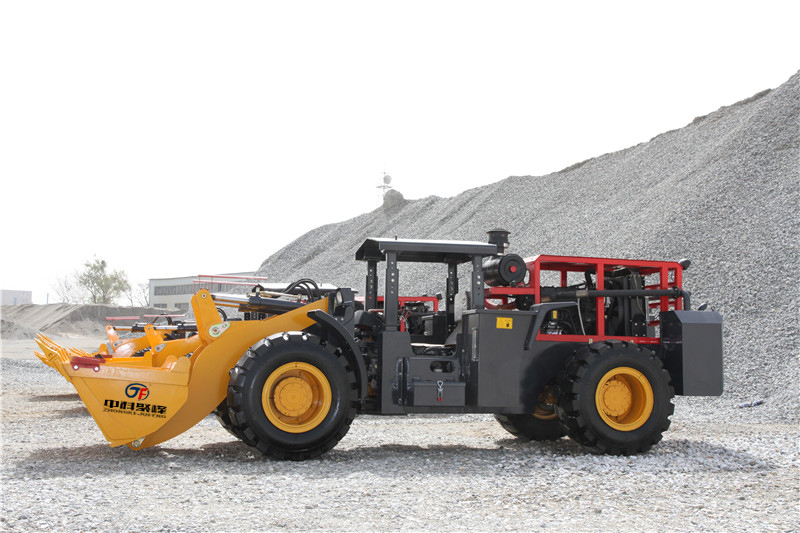

B> B> 壓力(油壓)傳感器,通過(guò)液體壓力轉(zhuǎn)換為裝載斗的重量來(lái)完成稱(chēng)重作業(yè),它改裝方便快捷,設(shè)備的測(cè)量精度相對(duì)使用稱(chēng)重傳感器大大提高,性能得到了保證。
B> B > the pressure (oil pressure) sensor completes the weighing operation by converting the liquid pressure into the weight of the loading bucket. It is convenient and fast to refit, the measurement accuracy of the equipment is greatly improved compared with the use of the weighing sensor, and the performance is guaranteed.
C> C>壓力(油壓)變送器,傳感器輸出的是mV信號(hào),而小信號(hào)在傳輸和處理的時(shí)候容易受到干擾,折算出來(lái)的重量容易引起誤差,對(duì)顯示部分的要求比較高,在對(duì)稱(chēng)重精度要求比較高的系統(tǒng)中使用比較困難。變送器很好的了這些問(wèn)題,它抗干擾能力強(qiáng)、輸出信號(hào)大(一般為4~20mA或者0-10VDC、0-5VDC),這樣對(duì)信號(hào)處理部分和顯示部分要求大大降低,稱(chēng)重系統(tǒng)的準(zhǔn)確度也相應(yīng)增強(qiáng)。
C> C > pressure The (oil pressure) transmitter and sensor output MV signal, while the small signal is easy to be disturbed during transmission and processing, and the converted weight is easy to cause error. It has high requirements for the display part, and it is difficult to use in the system with high requirements for symmetrical weight accuracy. The transmitter solves these problems well, with strong anti-interference ability and large output signal (generally 4 ~ 20mA or 0-10vdc, 0-5vdc), which greatly reduces the requirements for the signal processing part and the display part, and enhances the accuracy of the weighing system accordingly.
D> 下面介紹兩種適用于裝載機(jī)或鏟車(chē)稱(chēng)重裝置的壓力傳感器、變送器:
D> The following describes two kinds of pressure sensors and transmitters suitable for loaders or forklift weighing devices:
濺射薄膜壓力傳感器
Sputtering thin film pressure sensor
本產(chǎn)品采用濺射薄膜技術(shù)并結(jié)合裝載機(jī)稱(chēng)重系統(tǒng)的特點(diǎn)設(shè)計(jì),主要通過(guò)測(cè)量裝載機(jī)油壓進(jìn)而轉(zhuǎn)換成重量信號(hào)。
This product adopts sputtering film technology and is designed in combination with the characteristics of loader weighing system. It is mainly converted into weight signal by measuring loader oil pressure.
F> 1)、該產(chǎn)品的主要特點(diǎn):
F> 1) main features of the product:
G> a、體積小、重量輕,可直接過(guò)程安裝;
G> A. small volume and light weight, which can be directly installed in the process;
b、精度高、長(zhǎng)期穩(wěn)定性好;
b. High precision and good long-term stability;
c、抗震動(dòng)、沖擊、過(guò)載能力好;
c. Good resistance to vibration, impact and overload;
d、耐腐蝕,耐高溫,溫度漂移小
d. Corrosion resistance, high temperature resistance, small temperature drift
濺射薄膜壓力變送器
Sputtering film pressure transmitter
PPM-241A同樣通過(guò)測(cè)量油壓采集重量信號(hào),根據(jù)客戶(hù)具體要求采用數(shù)字電路對(duì)傳感器信號(hào)處理。
Ppm-241a also collects weight signal by measuring oil pressure, and uses digital circuit to process sensor signal according to customer's specific requirements.
1、 該產(chǎn)品的特點(diǎn):
1. Features of the product:
a、信號(hào)大,易換算。
a. The signal is large and easy to convert.
b、精度高,穩(wěn)定性好。
b. High precision and good stability.
c、抗震動(dòng)、沖擊、過(guò)載能力好。
c. Good resistance to vibration, impact and overload.
d、抗干擾能力強(qiáng)。
d. Strong anti-interference ability.
e、耐腐蝕,耐高溫,溫度漂移小
e. Corrosion resistance, high temperature resistance, small temperature drift
電阻應(yīng)變傳感器
Resistance strain sensor
(俗稱(chēng)貼片式傳感器PPM-242L)
(commonly known as patch sensor ppm-242l)
在裝載機(jī)稱(chēng)量貨物重量時(shí),連接鏟斗的油泵是不斷運(yùn)動(dòng)的,油泵內(nèi)的油(待測(cè)介質(zhì))經(jīng)過(guò)多次高壓后,溫度會(huì)升高,PPM-242L傳感器在應(yīng)變片的選擇上充分考慮了溫度因素,采用高溫應(yīng)變片,在制作過(guò)程中采取相應(yīng)措施讓傳感器溫度漂移盡可能的小,<±0.03FS,在安裝時(shí)一般是通過(guò)引壓管進(jìn)行安裝。這樣,傳感器承受的溫度和沖擊得到緩和,從而增加了設(shè)備的使用穩(wěn)定性。
When the loader weighs the goods, the oil pump connected to the bucket moves continuously, Oil in oil pump The temperature of (medium to be tested) will rise after high pressure for many times. The ppm-242l sensor fully considers the temperature factor in the selection of strain gauge, adopts high-temperature strain gauge, and takes corresponding measures to make the temperature drift of the sensor as small as possible, < ± 0.03fs. It is generally installed through the impulse pipe during installation. In this way, the temperature and impact borne by the sensor can be reduced And, thereby increasing the service stability of the equipment.
1)、PPM-242L主要特點(diǎn):
1) Main features of ppm-242l:
a、精度高,長(zhǎng)期穩(wěn)定性好。
a. High precision and good long-term stability.
b、密封好,耐腐蝕。
b. Good sealing and corrosion resistance.
c、低成本,性?xún)r(jià)比高。
c. Low cost and high cost performance.
安裝注意事項(xiàng)
Installation precautions
1)、螺紋安裝應(yīng)確保密封,安裝時(shí)應(yīng)采用密封膠或生料帶等輔助用具;
1) The thread installation shall ensure sealing, and auxiliary tools such as sealant or raw material belt shall be used during installation;
2)、接線(xiàn)嚴(yán)格按照產(chǎn)品說(shuō)明書(shū)執(zhí)行,防止因誤操作導(dǎo)致產(chǎn)品損壞;
2) Wiring shall be carried out in strict accordance with the product manual to prevent product damage due to misoperation;
3)、標(biāo)定時(shí)應(yīng)針對(duì)不同的方位、角度進(jìn)行多參數(shù)測(cè)試,確保設(shè)備在各種狀態(tài)下稱(chēng)量精度一致;
3) During calibration, multi parameter test shall be conducted for different directions and angles to ensure consistent weighing accuracy of the equipment under various states;
4)、如空間所限無(wú)法正常安裝時(shí),應(yīng)考慮采用引壓管引出安裝的方式,調(diào)試完成后再固定好。
4) If the installation cannot be carried out normally due to limited space, it shall be considered to adopt the way of pressure pipe leading out and installation, and then fix it after commissioning.




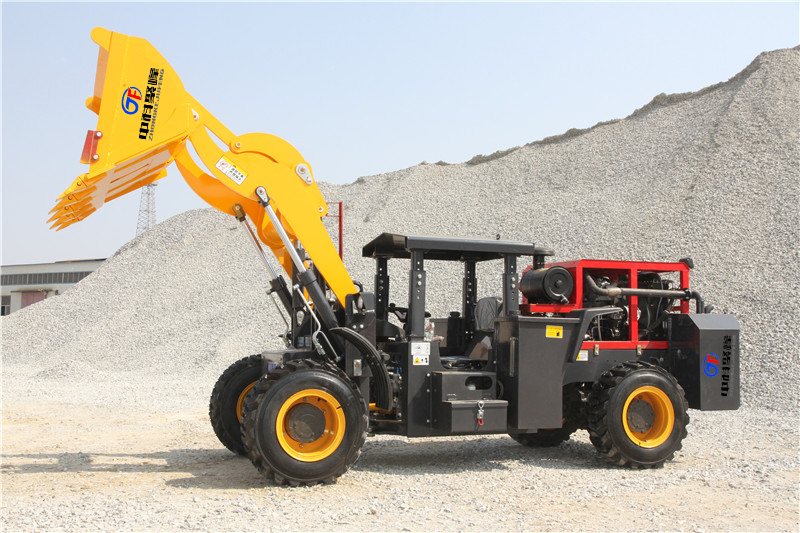
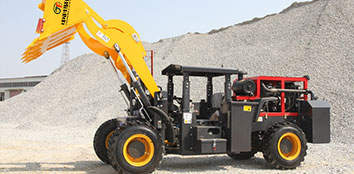
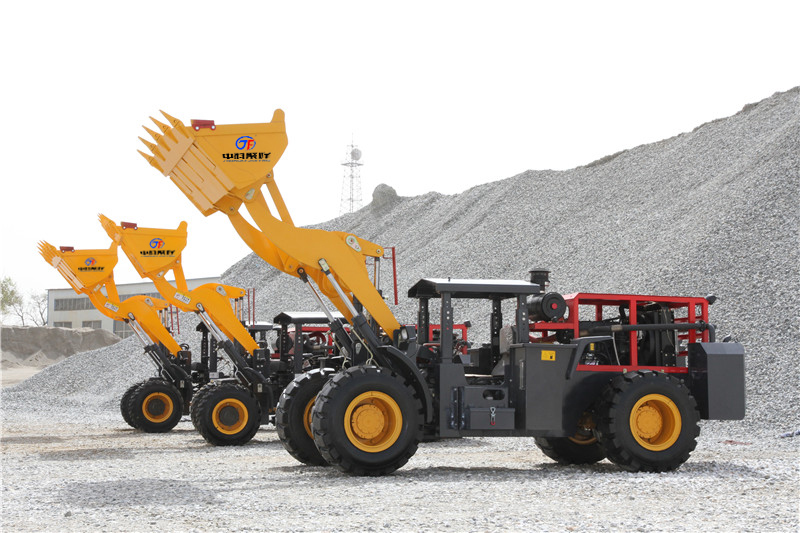
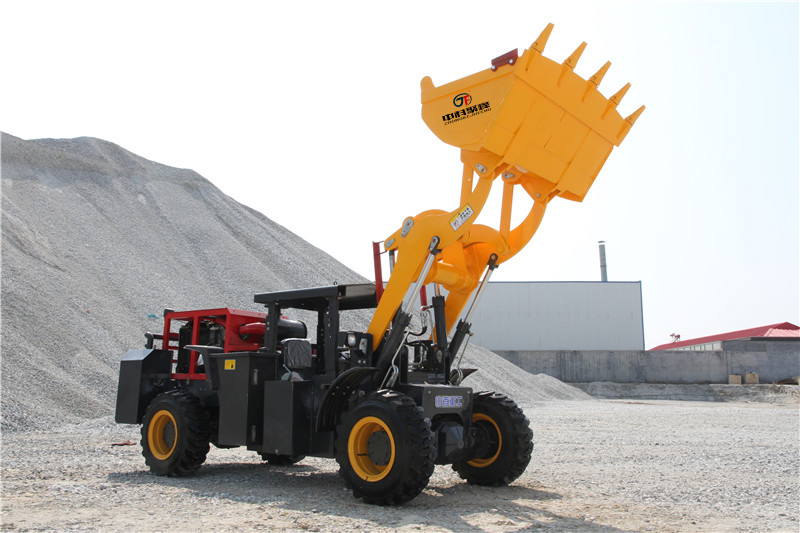
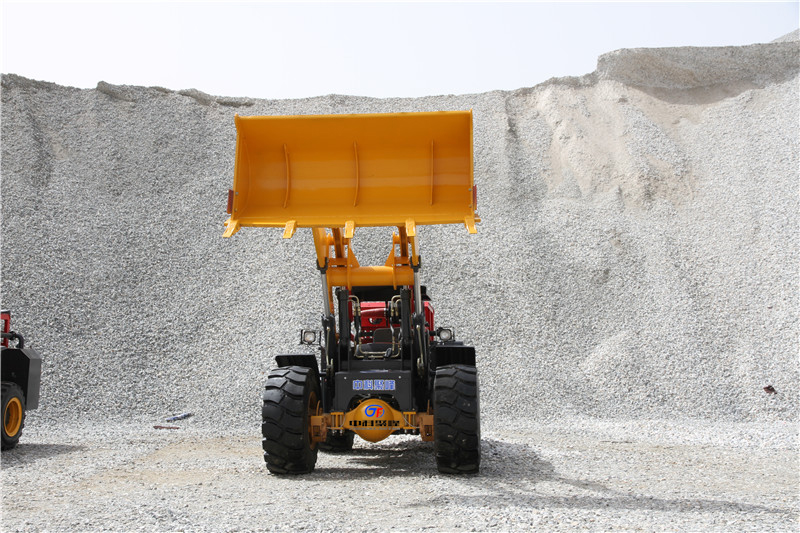
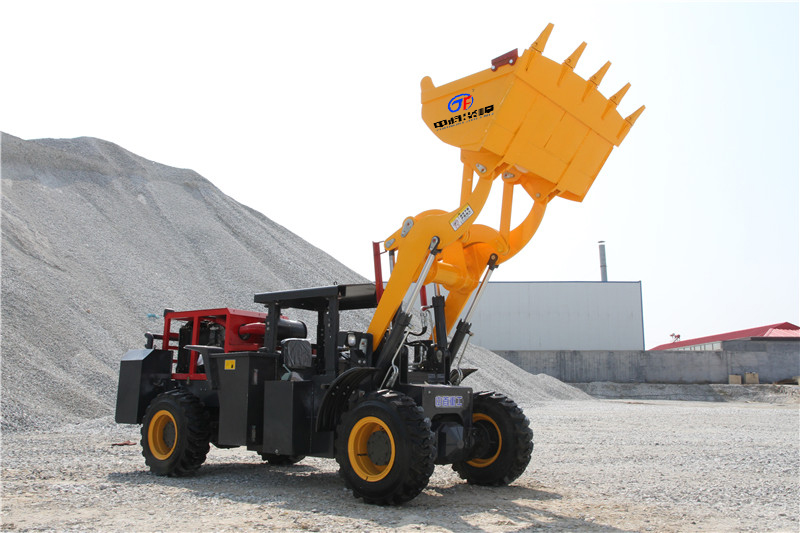
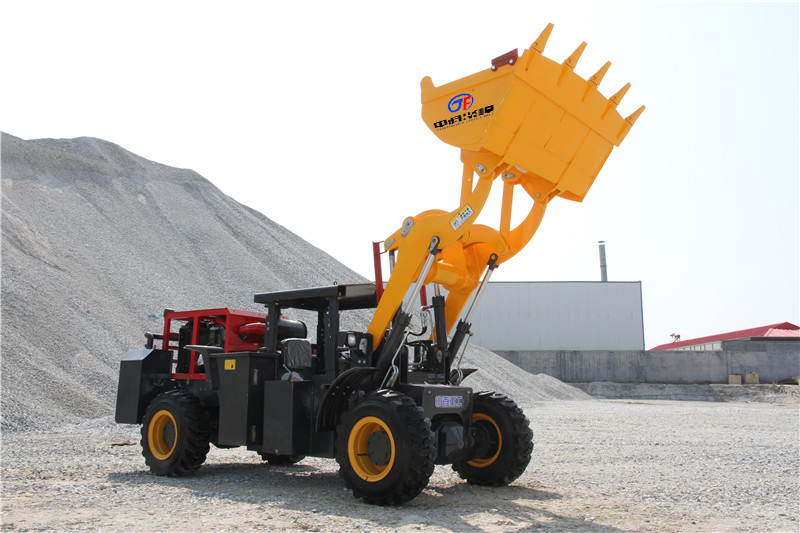
 服務(wù)熱線(xiàn)電話(huà)
服務(wù)熱線(xiàn)電話(huà)